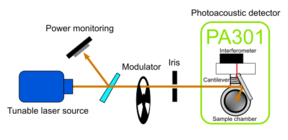PREIN Mensa (2023-2024)

In spectroscopic sensing, target compounds are detected from a sample based on unique optical properties, such as their absorption spectrum, but environmental sensing is challenging due to the complex and varying measurement matrix and any single method will typically fail to maintain its sensitivity and selectivity without laborious sample pretreatment. The aim in project MENSA is to combine advanced spectroscopic methods from participating PREIN partner institutes for enhanced detection of key environmental sensing targets. Methods such as active hyperspectral sensing and laser-induced breakdown spectroscopy will be utilized in carbon and mineral analysis in soils. Monitoring carbon flow in soils has a large climate impact as they represent the second larger carbon storage, after the oceans. Various techniques, such as hyperspectral imaging, photoluminescence and photoacoustic spectroscopy will also be applied in environmental sensing of microplastics, which are emerging as a major environmental challenge globally. Detection of microplastics in various environmental matrices is needed to improve our understanding of their path through the environment.
Aalto’s primary role in the project is to apply absorption spectroscopy for detection and identification of microplastics, using cantilever-enhanced photoacoustic spectroscopy (CEPAS). Photoacoustic spectroscopy detects absorption by measuring the pressure increase resulting from the absorbed energy being released as heat. In CEPAS, a conventional microphone is replaced with an optically read cantilever-microphone, resulting in a highly sensitive detector for absorption. In the project, a CEPAS detector is combined with a tunable laser source to measure absorption spectra for detection of microplastics in various matrices.
Contact person
- Published:
- Updated: